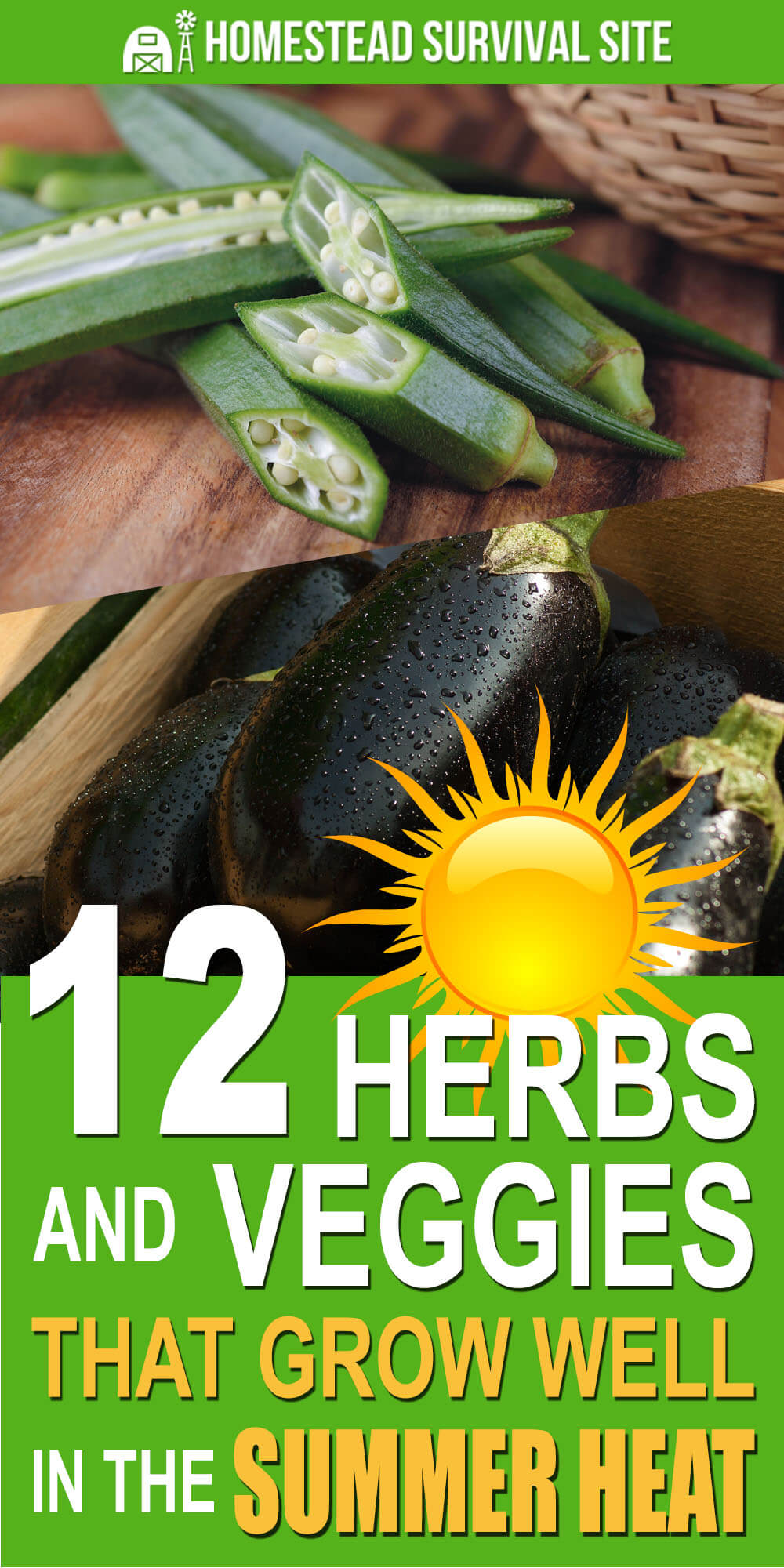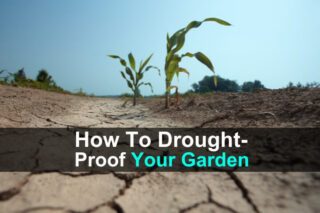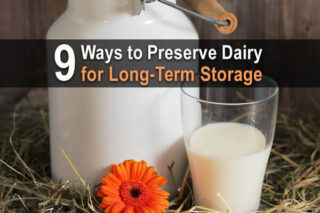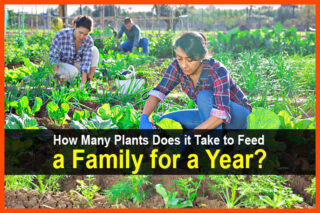Estimated reading time: 10 minutes
We wait all fall and winter for warmer temperatures so we can plant and enjoy our vegetable garden. But sometimes we get too much of a good thing. If your garden got scorched by intense temperatures last summer, you may be looking to add some more heat tolerant vegetables this year.
Most vegetables fall into one of two categories – cool weather or warm weather. While cool-weather plants thrive in the spring and the fall, warm-weather plants love the heat and sunlight of the summer. However, even plants designated as warm-weather vegetables can wither in prolonged upper 90's and 100-plus heat.
Want to save this post for later? Click Here to Pin It on Pinterest!
Here are some heat-tolerant herbs and vegetables to consider adding to your garden this year.
Herbs
Intense summer heat will wipe out many delicate culinary herbs such as chives, chervil, cilantro, fennel, dill, fennel, lavender, French tarragon, sage, parsley, and thyme. However, here are some herbs that are heat warriors.
1. Basil
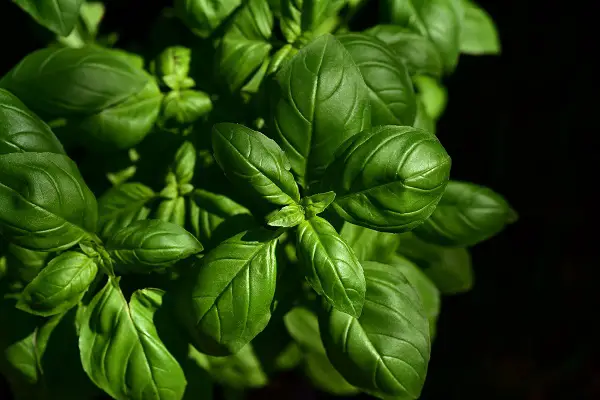
Basil prefers full to part sun and soil that drains well. As with other plants in your garden, watering regularly and using mulch to conserve soil moisture and help control weed growth will help basil handle hot weather ever better.
Basil grows quickly from seed, and young flower spikes can be cut and used just like the leaves of the plant.
2. Tarragon (certain varieties)
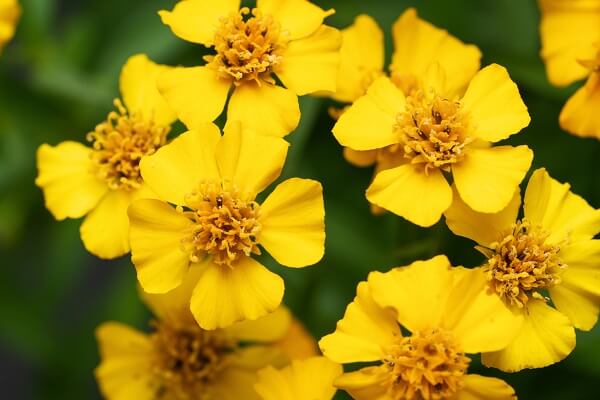
Although French tarragon can do poorly in the heat, Mexican or Spanish varieties thrive in hot summer weather. What’s even better is that these varieties return year after year in your garden as perennial herbs.
A relative of the marigold, Mexican or Spanish tarragon is native to Mexico and can grow to become a two- to a three-feet tall bush by summer’s end.
3. Perilla
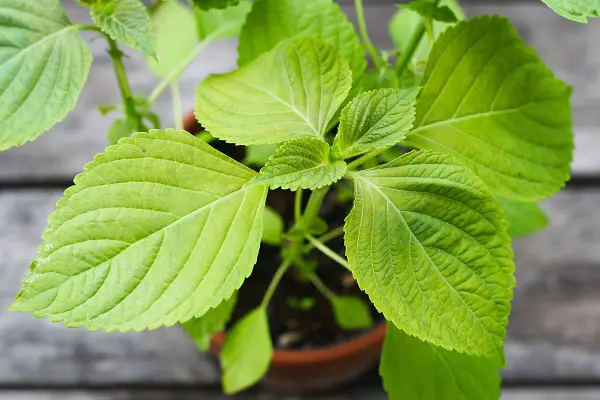
Perilla is an annual Oriental herb that works well in fresh summer salads. One variety has pretty dark purple foliage that can accent your flower beds with color and texture.
Although perilla is an annual plant, it self-seeds, so you are likely to find new seedlings each spring.
Veggies
4. Okra
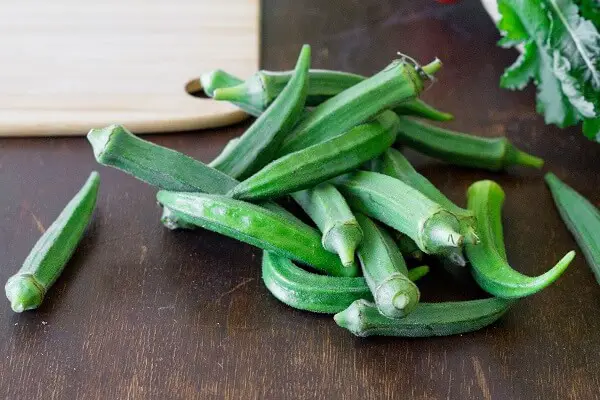
Long a favorite in Southern recipes, okra can be fried, fermented, roasted and stewed. This hardy plant adapts well to heat and dry conditions.
You can start okra seeds indoors under full light three weeks before the last spring frost date or cover young starts in your outdoor garden until the weather warms up. Early growth will be slow until average temperatures increase.
Okra plants grow like miniature trees with a main trunk and shoots that produce yellow blossoms and tender pods. Pods are best when they reach two to four inches long. If left longer on the plant, they can develop a tough or stringy texture, and they can hinder the production of more pods.
Okra has stiff leaf hairs that can poke your skin, so it’s a good idea to wear gloves and use pruning shears to harvest. Standard okra plants can grow up to eight feet tall by late summer. Pruning will help produce a good late season crop.
5. Eggplant
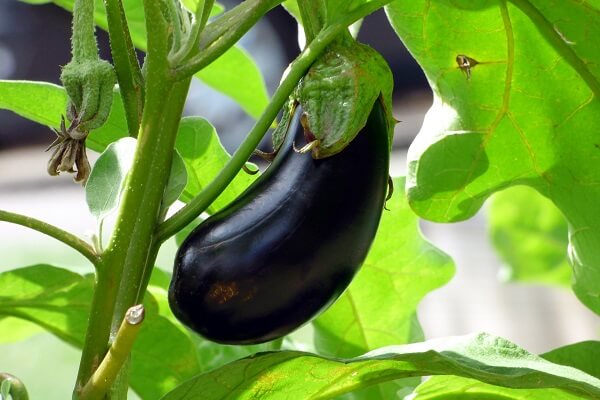
Another vegetable that loves hot weather and well-drained soil conditions is the eggplant. There are many varieties of this member of the nightshade family, and some, including the Mediterranean and Asian types, are specifically labeled as drought resistant.
Eggplants like warm soil, so be sure to cover your beds on cool nights. Another option is to plant your eggplant in dark containers that help hold the warmth of the sun.
With their heavy leaves and fruit, eggplants can topple over easily as they grow. Using stakes to help keep the plants upright solves this problem. Eggplants like moist but not soggy soil. Monitor plant and fruit growth carefully. Fruit that is ready for harvest will have hard flesh and small seeds. Over-mature fruit has softer skin, larger seeds, and a bitter taste.
6. Sweet Potatoes
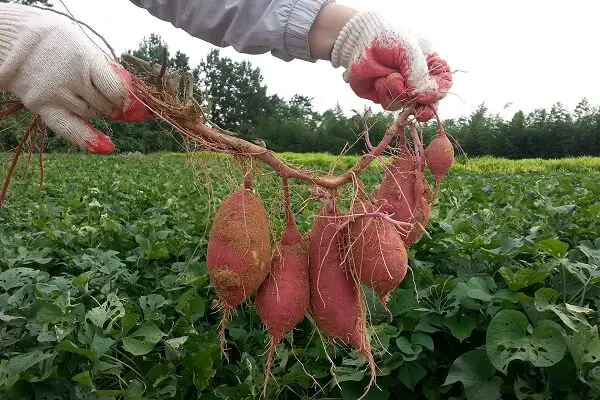
Save your white potato growing for the cooler temps and give the sweet potato a spot in your summer garden. This versatile vegetable (try it in stir-fries or in salads) is frost sensitive, but it loves the heat.
Plant in full sun about three weeks after the last frost by making holes about six inches deep and 12 inches apart. Place the sweet potato slips in the holes up to their top leaves, press soil down gently and water well. Soon vines will begin to spread, and you can harvest in as little as 90 days.
7. Cucumber
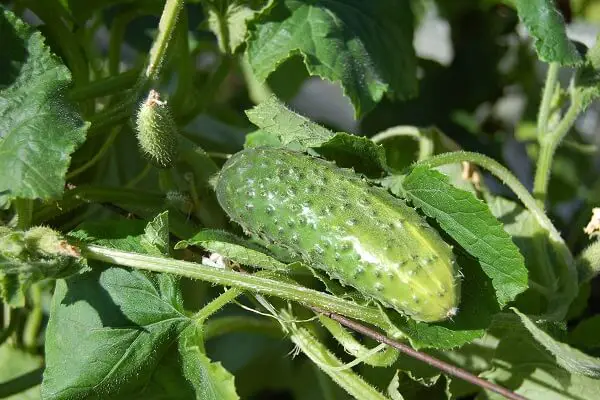
As long as they get enough water, cucumbers seem to like those scorching summer afternoons. These summer salad staples do not like the frost, however, so hold off on planting until several weeks after the last frost date.
Choose between vining and bush varieties, depending on the space you have in your garden. Vining plants grow along the ground or along a trellis, while bush plants are more compact. There are many varieties of cucumbers, including the Armenian cucumber, a long specialty variety that thrives in the heat.
Cucumbers tend to grow quickly, and they do not require much attention. They do need consistent moisture to thrive, however.
8. Cowpeas (Southern Peas)
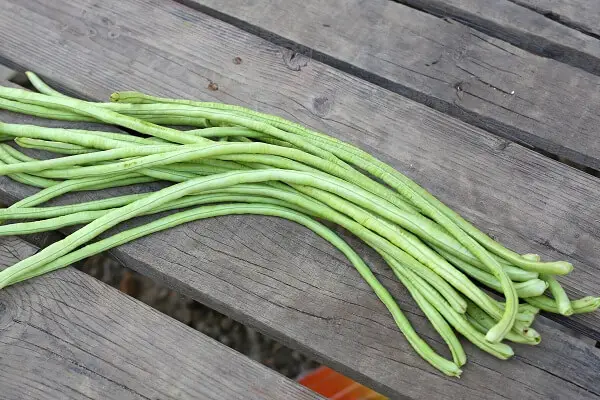
If your green beans have suffered in a heat wave, you might want to try Southern peas, also known as cowpeas and as black-eyed peas. You can eat them like snap beans before the peas mature, or later, you can enjoy the green shelled peas in a salad or as a side dish. You also can roast cowpeas like peanuts. An added benefit of cowpeas is that you can dry and store them easily.
Look for vigorous vining varieties that are drought resistant. Plant several weeks after the last frost in full sun and well-drained soil. For fresh use, harvest cowpeas when seeds have filled the green pods but have not hardened.
Yard long beans (also known as asparagus beans) are a variety of cowpeas that have long green or purple pods. They thrive in the heat and can offer shade to more heat-sensitive crops.
9. Tomatillos
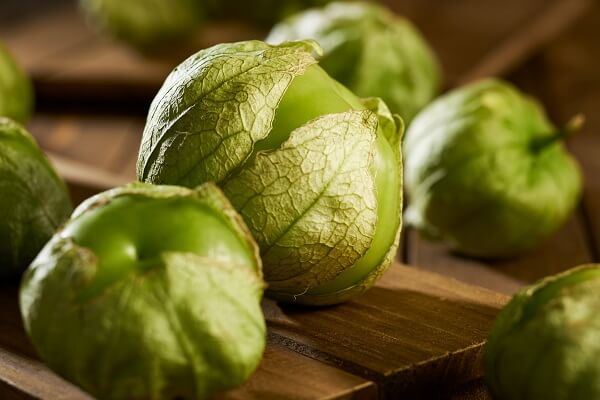
Regular tomatoes like the summer sun, but they can get damaged by intense heat. Maybe this is the year to try tomatillos. Frequently used as a salsa base, the small green fruit also works well in pasta sauces and salad dressings. Plus, they tend to thrive in the heat.
You’ll need at least two tomatillo plants for pollination, and you can estimate that each healthy plant will produce about a pound of fruit over the summer. After the danger of frost has passed, plant the tomatillo about as deep as you would a tomato plant – about three feet apart – along with a trellis or cage to support the fruit and keep it off the ground. Aim to keep the soil evenly moist.
All tomatillo varieties produce fruit with a green papery husk that begins to dry as it matures. Harvest tomatillos when they feel firm but give a little when gently pressed. You should be able to pull a ripe tomatillo easily from the plant.
10. Zucchini
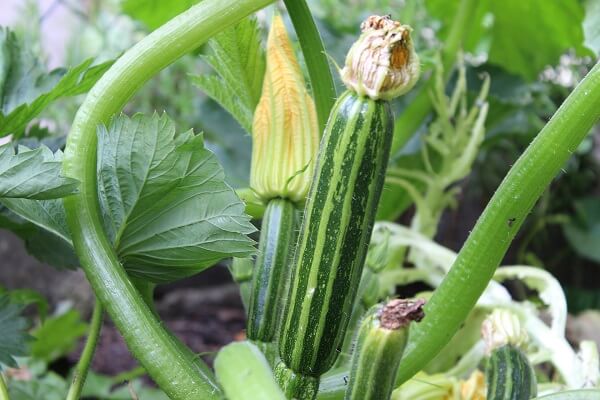
You usually know if you have a neighbor or co-worker who grows zucchini. They keep offering you some! That’s because zucchini thrives in the heat and, when given full sun and well-drained soil, a bumper crop is the reward for even the new gardener.
Plant transplanted seedlings or starter plants in late June or early July, allowing five to six feet between vining plants. You also can find some bush varieties that take up less space in the garden.
The flowers of female plants become fruit when pollinated by bees with pollen from male flowers. Most zucchinis and summer squashes begin to bloom about 35 to 45 days after germination The first blossoms to appear are from the male plants. These early flowers will not bear fruit, but they are edible. Try them in salads. Harvest zucchini with a sharp knife as soon as the fruits are ripe since overripe fruit can overburden the plants for nutrients and moisture.
11. Corn
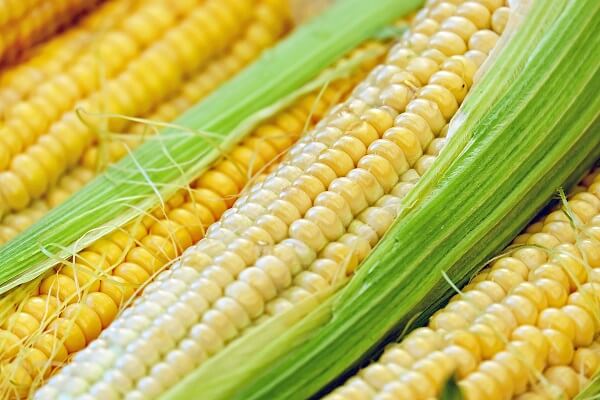
There’s nothing like the taste of fresh home-grown sweet corn. Contrary to what you might expect, corn grows well in small spaces, such as a raised bed or a deep container. And — you guessed it — corn loves the heat. In fact, corn will grow more quickly in warmer temperatures.
Corn takes anywhere from 60 to 100 days to reach harvest time, depending on the amount of heat and the variety of corn. You can harvest corn about 20 days after the first silk appears.
12. Spinach
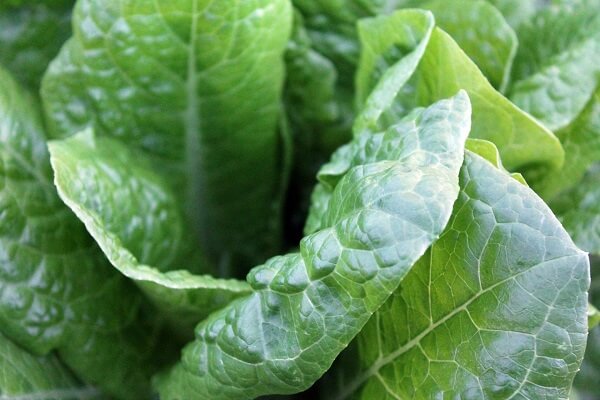
Some varieties of spinach really like the heat. For example, Malabar spinach, a vining plant with foliage perfect for recipes and salads, does best in areas where temperatures are consistently in the 90s and up.
Malabar Spinach is a vining plant whose foliage is a good summertime leafy green for salads and cooking. This crop is best grown where consistent 90-degree weather is experienced in summer.
Conclusion
Growing veggies in extreme heat can be time-consuming. Keep a detailed journal to help you remember what adapts well to the heat and what doesn’t. Remember that while you cannot control the temperatures, you can control the moisture your plants receive with extra watering when things get steamy.
Another point to keep in mind is that a long, hot summer can result in a longer growing season. If your garden is able to ride out the heat of summer, you may have October and November for an extended harvest.
Like this post? Don't forget to Pin It on Pinterest!

